5 Flooring Materials to Consider for Your Seattle Kitchen
Over time, there’s been a proliferation of different kitchen flooring materials, which makes it easier than ever to customize your Seattle kitchen makeover. However, it can also be difficult to sift through those options and pick just the right one for your project.
Kitchen Flooring: What to Consider
The kitchen is a unique space for several reasons. It tends to get a lot of foot traffic, as multiple household members use the room for various reasons on a daily basis. It endures wear and tear in other ways as well: Dishes get dropped, food is spilled, water is splashed all over the surface. Because of the unique components utilized in this space, there’s also the risk of a plumbing malfunction that can lead to flooding.
You want to take all this into consideration when selecting a flooring material for your kitchen renovation. However, your lifestyle is also unique. Only you know how your kitchen is used, by whom and how often. Those factors make a difference. Other considerations include your sense of style, or what vibe you’re going for, and how much of your kitchen remodeling budget you want to dedicate to flooring.
To help with your renovation planning, here is an overview of the most popular kitchen flooring materials and their pros and cons:
1. Ceramic and Porcelain Tile
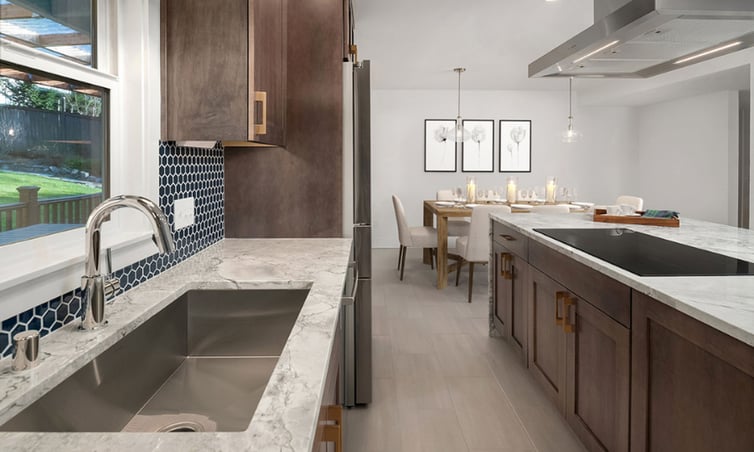
One of the most common flooring types for the kitchen is tile, which is usually made from ceramic or porcelain. Those two materials are often seen as interchangeable, but there is a slight difference between the raw materials, firing temperatures, and timeframes used in the manufacturing process.
Porcelain tiles are typically made from a more refined, denser-grade clay than their ceramic counterparts. They are also fired for longer and at higher temperatures, making them a bit more durable. Some manufacturers categorize porcelain as a type of ceramic tile.
Either way, they share several of the same benefits, such as affordability and extreme durability. You can find various styles, colors, and shapes of tiles to fit your specific kitchen design style. If you want waterproof building materials in your kitchen, ceramic tile is a smart way to go. The tiles themselves are also stain-resistant and straightforward to clean, although maintaining the grout takes more effort since it’s prone to staining. You’ll also want to look for slip-resistant tile options or smaller tiles with non-slip features like patterns and textures for a kitchen remodel.
On the downside, tile can be cold beneath bare feet, and walking or running on the hard floor is noisy. If you drop glasses or other delicate dishes on the ground, they're likely to break.
2. Natural Stone
When designing an upscale kitchen, natural stone is an obvious choice for your flooring. Typically, this stone is formed into tile and then installed.
From marble and quartz to travertine, slate, and quartzite, natural stone is associated with luxurious living. It offers vast differences in composition, color, and texture as an organic material, even among pieces derived from the same source. It is tough, durable, and long-lasting.
Natural stone comes with a steeper price tag compared to other kitchen flooring types, but it impacts the long-term value of your Seattle home accordingly.
A few challenges when using natural stone for your renovation: You have to ensure it is installed correctly by a professional. Plus, natural stone tiles are often porous and susceptible to water and liquid penetration and staining. The tiles must be re-sealed regularly to prevent these issues and protect the material’s appearance and longevity. Two of the best stone materials for kitchen flooring are slate and granite. If they are sealed periodically and maintained properly, they can last for decades.
3. Hardwood
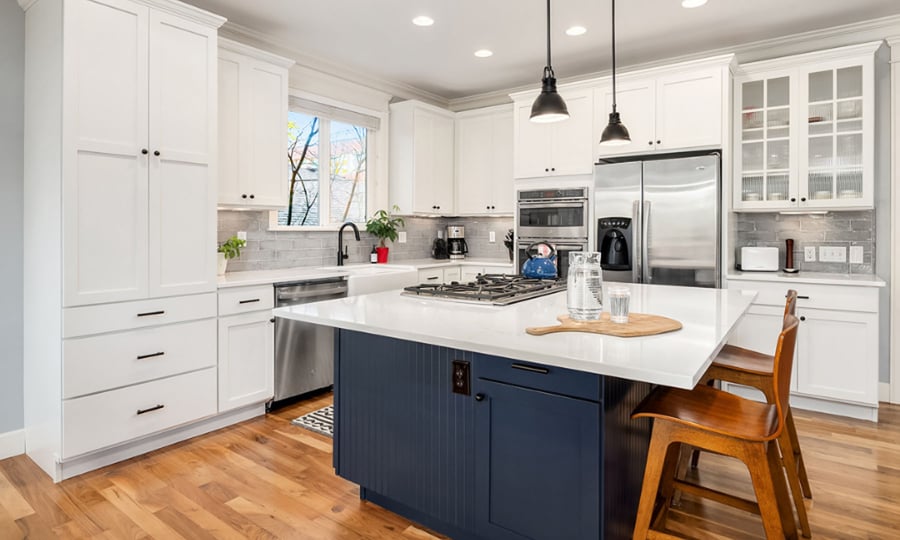
Like stone, hardwood is one of those rich, supple materials that endows your kitchen with a natural warmth and luxury. Although hardwood flooring also tends to be on the higher end of the spectrum in terms of cost, it also has a higher resale value than many other flooring options.
Hardwood comes in a wide variety of hues and styles, based on the type of wood used and its finish. Deep cherry and walnut finishes are timeless, but blonde or honey-colored wood, as well as grays and whitewashes, are increasingly popular in 2021. You can easily work hardwood into any kitchen design type, from contemporary and traditional to Old World styles, farmhouse, or country chic. Hardwood can also be re-finished or re-stained if you want to give it a new look or cover up wear and tear.
Hardwood is not waterproof, but it is a water-resistant building material if you use the proper finish. Even still, long-term exposure to moisture will cause damage to your flooring, and you also need to clean up spills quickly to prevent staining.
Although hardwood can be noisy, it tends to be softer and warmer underfoot than stone or other types of tile. Another draw is you can find recycled, reclaimed, and other environmentally sustainable varieties of hardwood.
4. Laminate
Laminate flooring comprises three layers: a base layer made from fiberboard or plywood; a photo-realistic image; and a hard plasticate on top to prevent scratches, scuffs, and dents. Invented in the 1970s, it used to have a poor reputation for looking cheap and plastic-like. Over time, however, better technology and manufacturing processes have resulted in laminate flooring options that are nearly indistinguishable from natural hardwood. And the best part? It’s significantly more cost-effective.
Laminate flooring is also easier to install—even for a DIY project. Some can be clicked together and glued down or left as a floating floor. It is also water-resistant, durable, and soft underfoot. Because it’s a synthetic material, you can achieve a more uniform look with laminate planks.
On the downside, laminate is not a sustainable material, and it can’t be refinished or re-stained. That means if it gets scratched or stained, you are left with the damage for life.
5. Vinyl
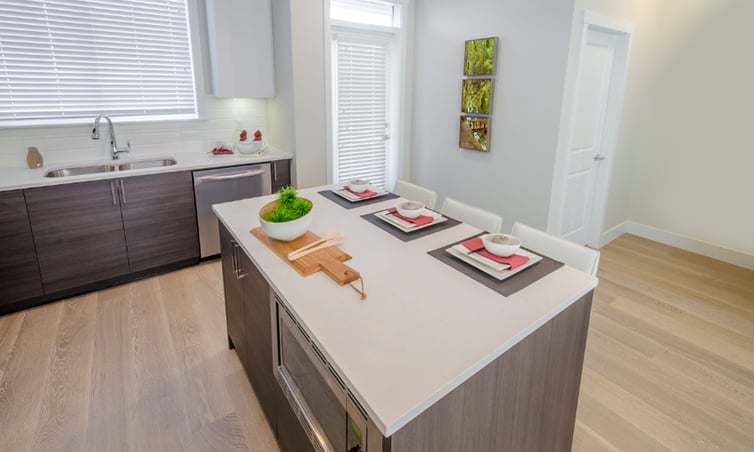
Vinyl is one of the most versatile and cost-effective flooring materials—so much so that it is now the fastest-growing sector of the flooring industry. As a synthetic material, you can find a wide range of colors, styles, and patterns to complement your kitchen style.
Like laminate, it is one of the more affordable flooring selections, which makes it a good fit when you’re remodeling a family kitchen that sees a lot of daily use from household members of different ages. However, you can also go a step up for a higher-end kitchen by choosing luxury vinyl tile (LVT) or luxury vinyl planks (LVP) for the floor. LVT is designed to mimic the look of stone or ceramic tile, while LVP resembles hardwood.
Another attractive quality of vinyl is the ease of maintenance. To start with, it is almost impervious to stains and water damage, and all you need to do is take a broom, vacuum, and mop to it on a regular basis.
The disadvantage of vinyl is that it can’t be “fixed” if it gets scratched or stained, much like laminate. Your flooring may start to wear and fade in about ten years, and you'll have to replace it.
Remodeling Your Seattle Kitchen from Top to Bottom
When you’re designing a kitchen makeover, the flooring material is only one of the many decisions you’ll have to make. As you’re evaluating different options and trying to develop a cohesive plan that fits your budget and personal preferences, it can help to have an experienced team by your side. At Innovative Home Renovations, one of our top priorities is providing you with a stress-free and rewarding kitchen remodeling experience. We use consistent communication, attention to detail, and close collaboration when both designing and constructing your project to create the space you envision for a set price.


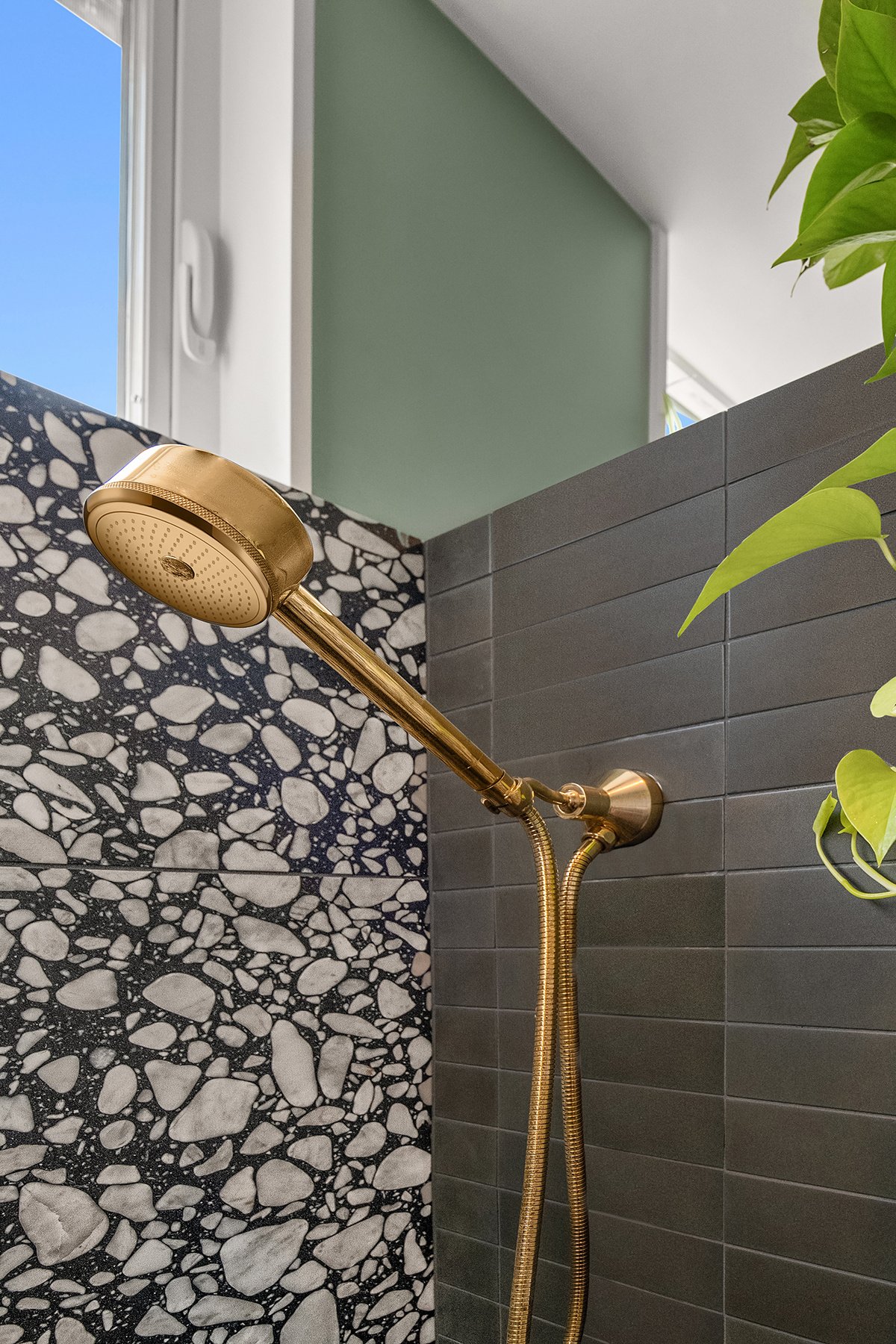
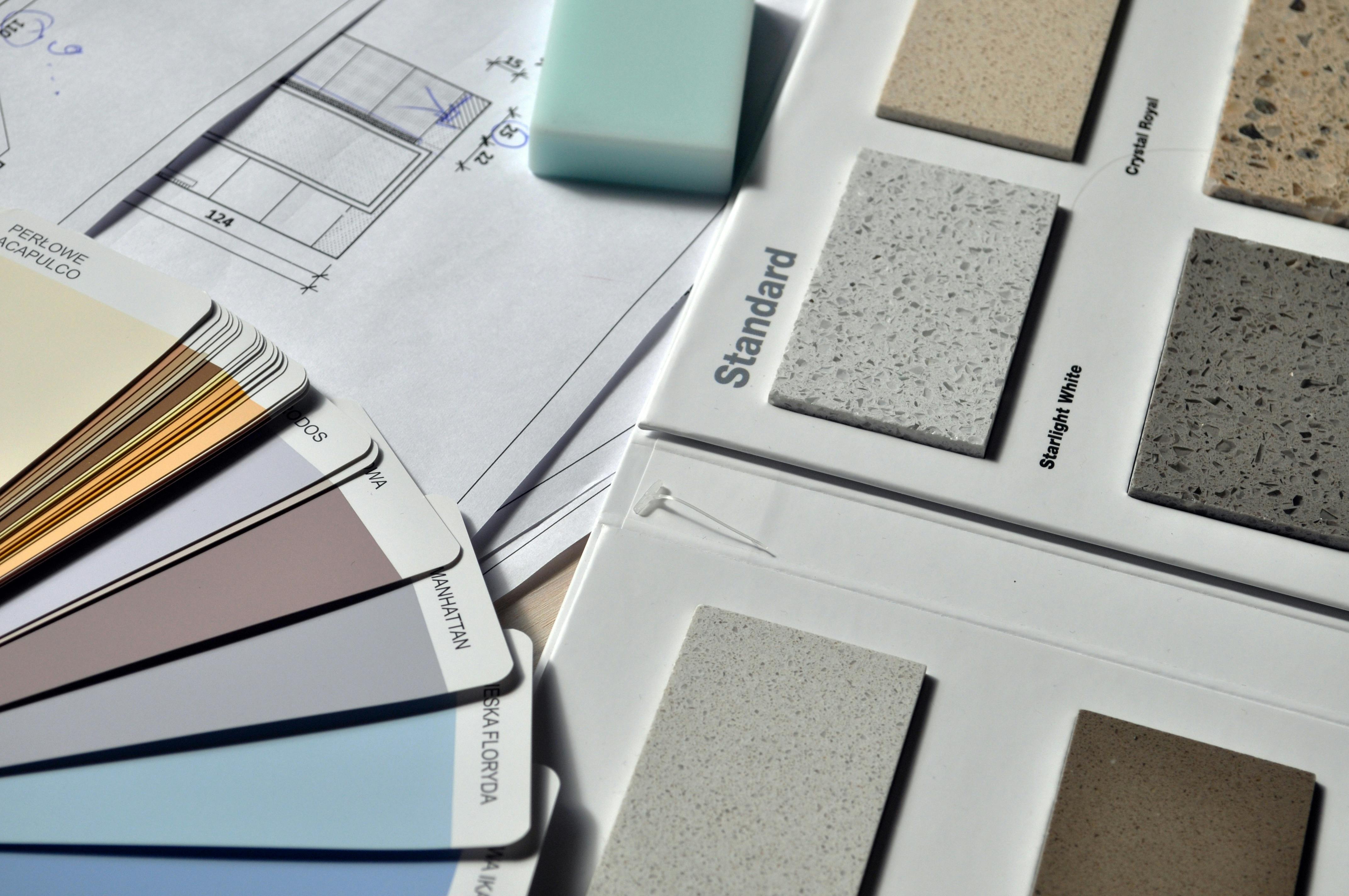
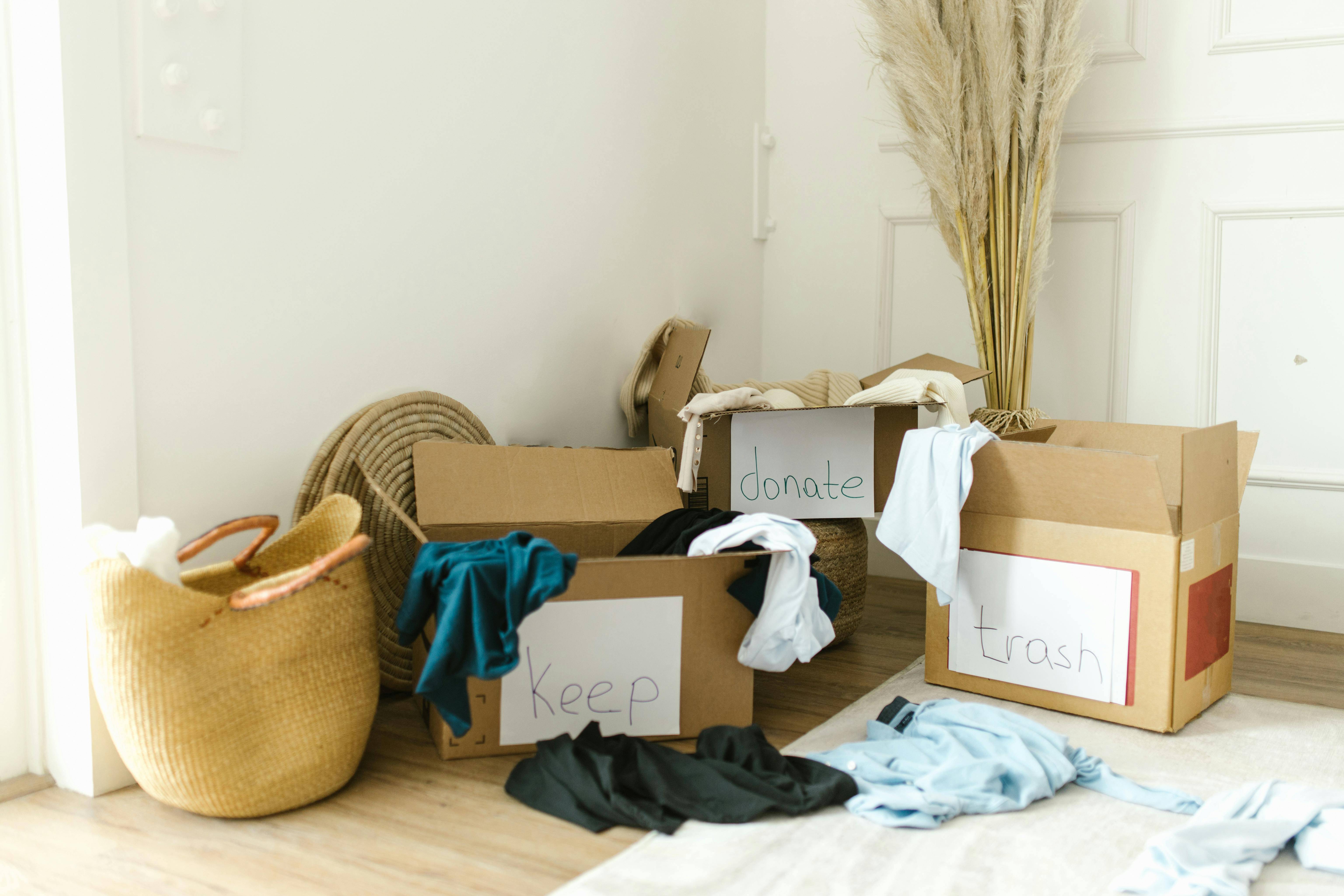
by Bennett Bottorff